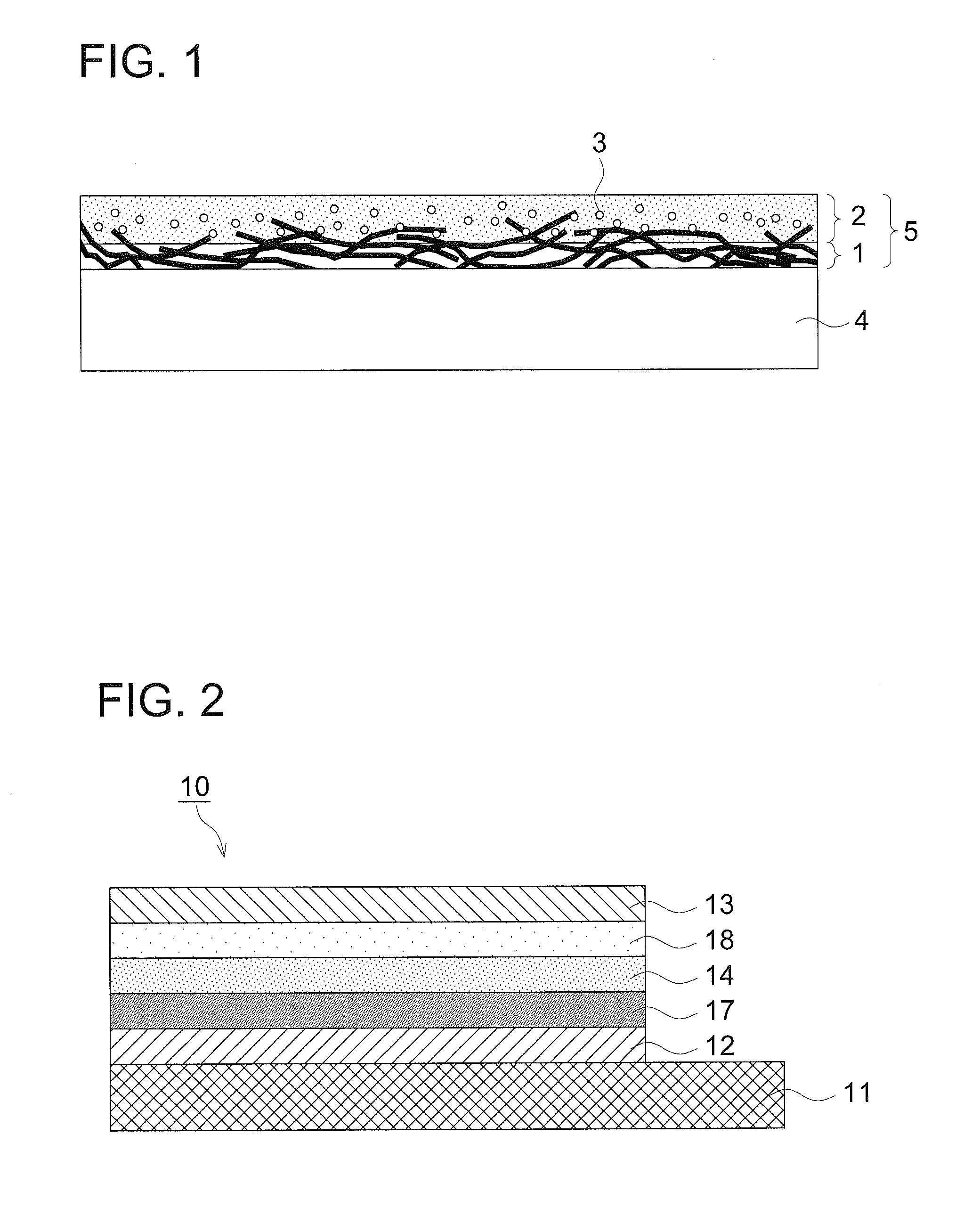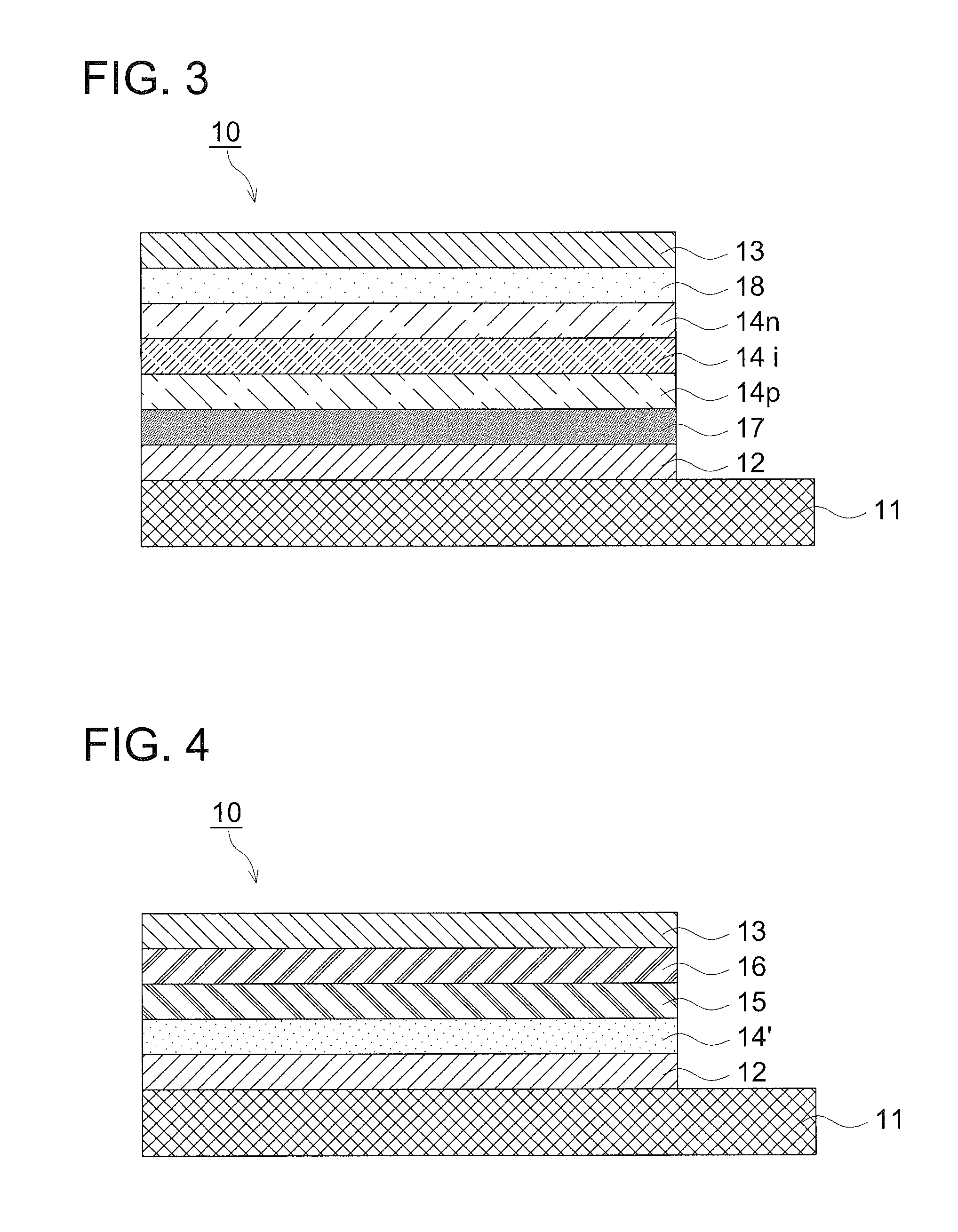Organic photoelectric conversion element and producing method of the same
- Summary
- Abstract
- Description
- Claims
- Application Information
AI Technical Summary
Benefits of technology
Problems solved by technology
Method used
Image
Examples
synthetic example 1
Synthesis of methoxy capped oligo(ethylene glycol) methacrylate
[0189]In a 50 ml three necked flask were placed 7.3 g (35 mmol) of 2-bromoisobutyryl bromide, 2.48 g (35 mmol) of triethylamine and 20 ml of THF. The inner temperature of the solution was kept to be 0° C. with an ice bath. Into the solution was dropwise added 10 g (23 mmol) of oligo(ethylene glycol)(the number of ethylene glycol being 7 to 8, made by Laporte Specialties Co., Ltd.) as 33% of THF solution in an amount of 30 ml. After stirring the solution for 30 minutes, the temperature of the solution was raised to room temperature, and further the solution was stirred for 4 hours. THF was removed under reduced pressure with a rotary evaporator. The residue was dissolved in ethyl ether and transferred into a separation funnel. Water was added in the separation funnel to wash the ether layer. After repeating this process 3 times, the ether layer was dried with MgSO4. Ether was removed under reduced pressure with a rotary e...
synthetic example 2
Synthesis of poly(2-hydroxyethyl methacrylate)
[0190]Into a Schlenk flask were placed 500 mg (1.02 mmol) of Initiator 1, 4.64 g (40 mmol) of 2-hydroxyethyl methacrylate (made by Tokyo Kasei Co., Ltd.) and 5 ml of a water-methanol mixed solvent (50:50 (v / v %)). The Schlenk flask was immersed in liquid nitrogen under a reduced pressure for 10 minutes. The Schlenk flask was taken out from liquid nitrogen. After 5 minutes, nitrogen gas substitution was carried out. This operation was repeated three times. Then, 400 mg (2.56 mmol) of bipyridine and 147 mg (1.02 mmol) of CuBr were added into the Schlenk flask under nitrogen and stirred at 20° C. After 30 minutes, the reaction solution was dropped on a Kiriyama Rohto (diameter of 4 cm) provided with a filter paper and silica and the reaction solution was recovered. The solvent was removed under a reduced pressure with a rotary evaporator. The residue was dried under a reduced pressure at 50° C. for 3 hours to yield 2.60 g (yield: 84%) of Wa...
PUM
| Property | Measurement | Unit |
|---|---|---|
| Electrical conductor | aaaaa | aaaaa |
| Transparency | aaaaa | aaaaa |
Abstract
Description
Claims
Application Information
 Login to View More
Login to View More - Generate Ideas
- Intellectual Property
- Life Sciences
- Materials
- Tech Scout
- Unparalleled Data Quality
- Higher Quality Content
- 60% Fewer Hallucinations
Browse by: Latest US Patents, China's latest patents, Technical Efficacy Thesaurus, Application Domain, Technology Topic, Popular Technical Reports.
© 2025 PatSnap. All rights reserved.Legal|Privacy policy|Modern Slavery Act Transparency Statement|Sitemap|About US| Contact US: help@patsnap.com



